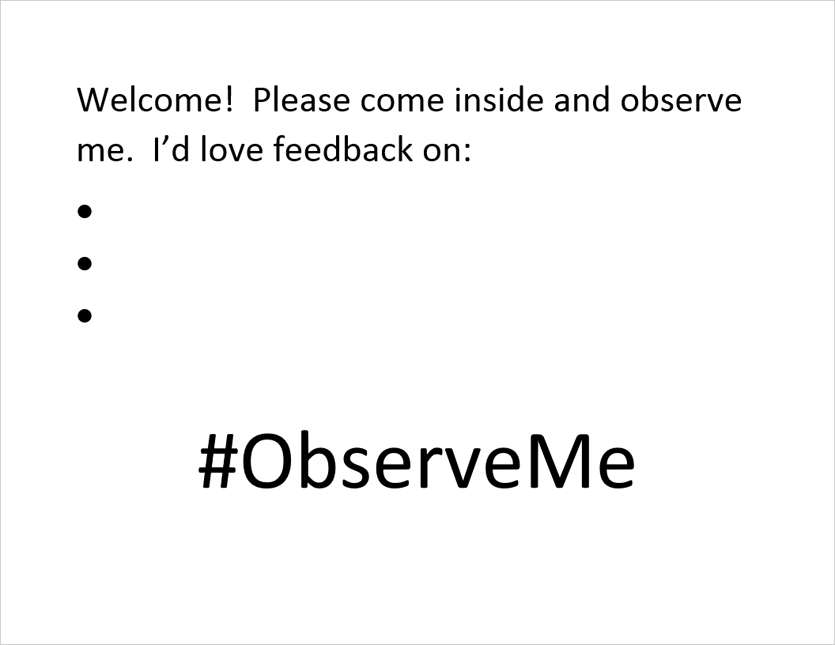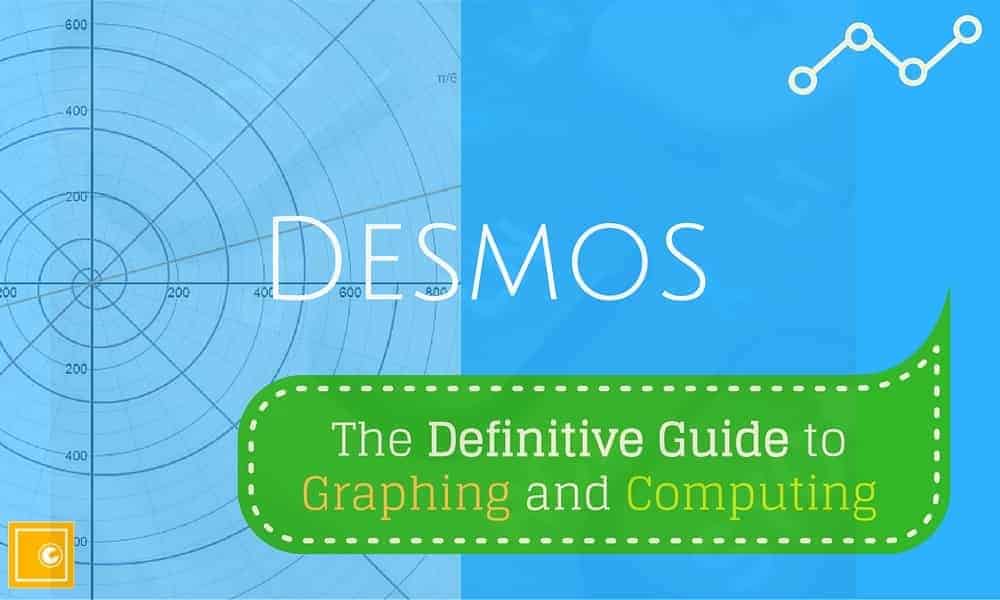 I love this post by @RobertKaplinsky. It's a call to action that he started with the catalyst of this post from @Heather_Kohn. I love the sign that says "If Mr ______ is teaching then please come in and observe". The idea is that we need to teach with our doors open and invite anyone in at any time. I have long professed this but Robert has made the formal shout out for teachers everywhere to open their doors. I don't think that this is supposed to be exclusive to "master" teachers, but this is for everyone. That is, everyone can show something interesting and everyone has ways they can improve. The added benefit is that students soon realize that you are all in this together and pretty soon you have a community rather than isolated classrooms. If you want to participate then at the very least you can just open your door. But Robert has actually got some steps if you want to go all in:
I love this post by @RobertKaplinsky. It's a call to action that he started with the catalyst of this post from @Heather_Kohn. I love the sign that says "If Mr ______ is teaching then please come in and observe". The idea is that we need to teach with our doors open and invite anyone in at any time. I have long professed this but Robert has made the formal shout out for teachers everywhere to open their doors. I don't think that this is supposed to be exclusive to "master" teachers, but this is for everyone. That is, everyone can show something interesting and everyone has ways they can improve. The added benefit is that students soon realize that you are all in this together and pretty soon you have a community rather than isolated classrooms. If you want to participate then at the very least you can just open your door. But Robert has actually got some steps if you want to go all in:- List what you want feedback on.
- Consider including an observation tool like this Levels of Classroom Discourse one from Principles to Action so it is easier for observers to give you actionable feedback.
- Print out the sign and put in on your door or window (maybe with a pile of observation tools nearby).
- Then, take a picture of it and tweet it out using the hashtag #ObserveMe.
Curriculum Tags: All
http://robertkaplinsky.com/observeme/
 After I posted my Line of Best fit Desmos Activity last week, I got a reply from @MathVault pointing out that they have a pretty definitive set of Desmos tutorials (among other things). One of the parts I love the best about this is the stuff on statistics because you don't get a sense that you can do too much on Desmos with stats.
After I posted my Line of Best fit Desmos Activity last week, I got a reply from @MathVault pointing out that they have a pretty definitive set of Desmos tutorials (among other things). One of the parts I love the best about this is the stuff on statistics because you don't get a sense that you can do too much on Desmos with stats. Curriculum Tags: All
http://mathvault.ca/
We hosted @Marian_Small this week and had a great time with her style of asking questions. She has a great way of taking things that are often procedural and turning them into things that students really have to think about. See below for two examples. And check out the link to her slides from both her k-6 session and 7-12 session.
Curriculum Tags: All
http://www.onetwoinfinity.ca/wp-content/uploads/2016/08/WindsorK6.pdf
http://www.onetwoinfinity.ca/wp-content/uploads/2016/08/Windsor7to12.pdf
Our k-6 teachers are starting with a nice problem to chew on with @marian_small this morning #mathchat pic.twitter.com/Jnn5dXmzl3— David Petro (@davidpetro314) August 16, 2016
Here is a nice puzzle originating from @mathgarden (actually, he credits Sam Vandervelde) and found on the Numberplay column from the NYTimes. It deals with large numbers and divisibility.What do you know for sure? - another morning with @marian_small and open questions #mathchat pic.twitter.com/WMmcB0k4Qd— David Petro (@davidpetro314) August 17, 2016
Curriculum Tags: All
http://www.nytimes.com/2016/08/15/crosswords/olympic-strategies-part-2.html?_r=0
The Most Important (set of ) Video(s) you will ever see. That is the name of this lecture on the nature of exponential growth from Albert Bartlet. It's old (poor quality) and not too high tech but there are some awesome things in it and worth the watch to get things you can use in your classes.
Curriculum Tags: MCR3U, MAP4C, MHF4U, MCT4U
https://www.youtube.com/watch?v=eOykY2SMbZ0
It's always good when you can combine Lord of the Rings and asymptotes
Curriculum Tags: MCR3U, MHF4U
https://www.facebook.com/pornscience/photos/a.145146232329411.1073741828.139938556183512/624386444405385/?type=3&theater
This is not new but I saw it recently. I like this as a kernel for a problem dealing with volume and spheres. The premiss is that if you took all the water on the earth and put it into a sphere it would be about 860 miles across. There is more at the link below on just the fresh water or rivers. Take a look
Curriculum Tags: MPM1D, MFM1P, MFM2P
http://water.usgs.gov/edu/earthhowmuch.html








No comments:
Post a Comment